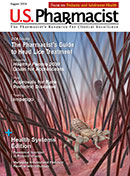While the CDC recommends a two-dose series of the HPV vaccine, researchers at the University of Texas Medical Branch attempted to determine the effectiveness of other dose schedules. The objective of their study was to investigate the correlation between the number of HPV vaccine doses and the risk of histologically confirmed, preinvasive cervical disease and high-grade cytology. This study was a retrospective matched cohort study that utilized administrative data from Optum’s Clinformatics DataMart Database to find females aged 9 to 26 years who received one or more quadrivalent HPV vaccine doses between January 2006 and June 2015. The cases and controls were paired based upon region, age, sexually transmitted disease history, and pregnancy. All subjects had a Papanicolaou test 1 year after the matched case’s final dose.
Researchers employed Cox proportional hazards models to assess the link between the number of HPV vaccine doses and the prevalence of preinvasive cervical disease and high-grade cytology. The Kaplan?Meier method was utilized to estimate the cumulative frequency rate at the 5-year follow-up. The study included 133,082 females, 66,541 of whom were vaccinated and 66,541 of whom were unvaccinated, stratified by the number of HPV vaccine doses and the vaccine-initiation age.
The study found that for females aged 15 to 19 years, those who received one, two, or three doses of the HPV vaccine, had lower rates of preinvasive cervical disease than adolescents who were unvaccinated. Also, within 5 years, 2.65% of unvaccinated teens aged 15 to 19 years developed preinvasive cervical disease, compared with 1.62%, 1.99%, and 1.86% in the one-, two-, and three-dose groups, respectively. In addition, the risk of preinvasive cervical disease was 36%, 28 %, and 34% lower for adolescents who received one, two, and three doses, respectively, compared with those who were unvaccinated. Finally, for the youngest subjects (younger than age 15 years) and oldest age groups (aged 20 years and older), the researchers did not find substantial variations among the vaccinated groups in terms of risk for preinvasive cervical disease.
The authors concluded that the receipt of one, two, or three doses of an HPV vaccine by females aged 15 to 19 years was associated with a lesser occurrence of preinvasive cervical disease compared with unvaccinated females. As a result, the researchers stated that these findings support the utilization of any HPV vaccination in decreasing the burden of HPV-related disease.
The lead researcher, Dr. Rodriguez stated, “This study shows the impact of vaccinating at younger ages and its lasting long-term protection against cervical cancer. It is important to educate parents about the need to vaccinate their children.”
The study also contains a supplementary editorial that examines the public-health implications of the study’s findings.






